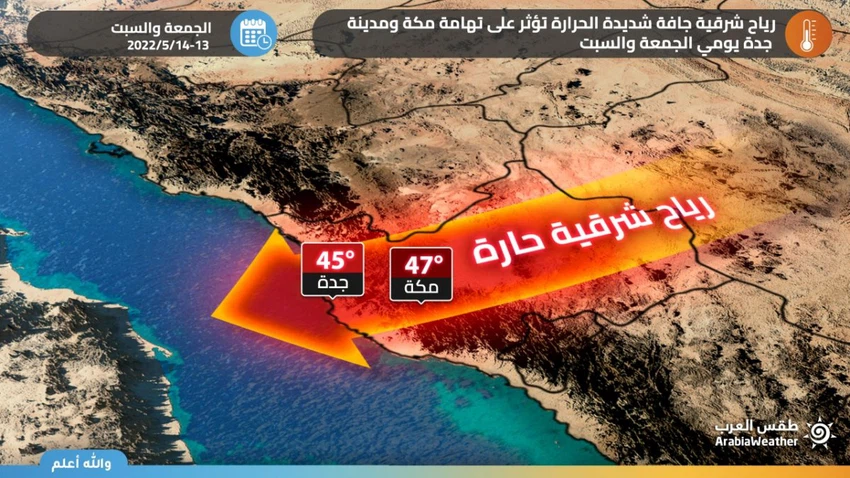Saudi Arabia | Early warning of very hot eastern winds affecting Makkah and Jeddah at the end of the week
Arab Weather - The latest weather forecasts issued by the forecast staff in Arab weather indicate a high probability of the flow of very hot easterly winds towards the Makkah region, and possibly the city of Jeddah at the end of this week.
It is expected that the holy city of Makkah will record high temperatures on Thursday and Friday between 45 and 47 degrees Celsius, while approaching the 45th barrier in Jeddah, amid warnings of the danger of prolonged exposure to the sun.

Dry east winds raise dust and dust
The dry eastern wind is the most prominent reason for this significant increase in temperatures, as it blows over the Makkah Al Mukarramah region from hot and dry desert areas, and these winds will also stir up dust and dust sometimes.
Important recommendations:
Avoid prolonged and direct exposure to the sun
Drink a lot of water to compensate for the lack of water caused by the sweating process
Arabia Weather App
Download the app to receive weather notifications and more..



